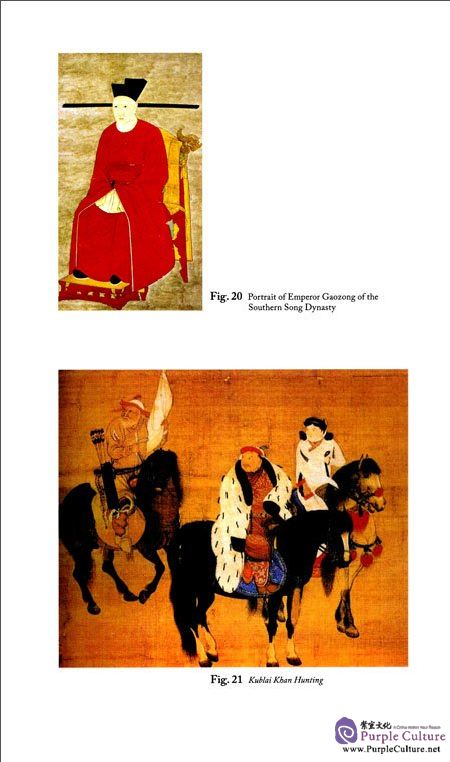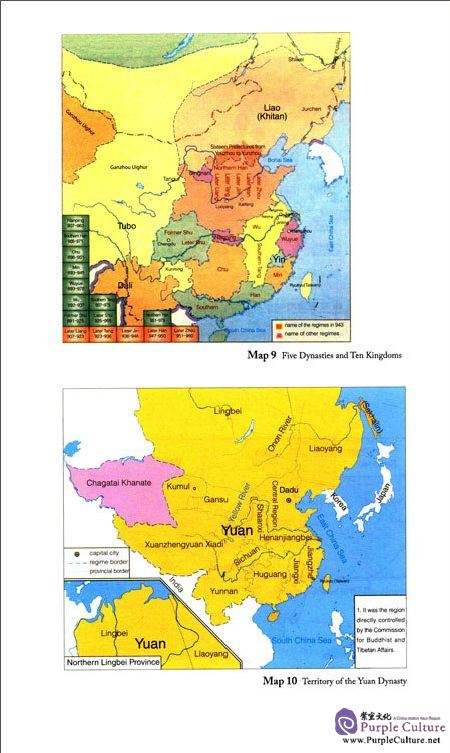This is a Chinese account of China, seen from the inside and presenting many of the stories behind historical events that are familiar to Chinese people from their scooldays but are little known even among foreign historians of China. It is a valuable complement to the standard histories of China available in English. ——Michael Dillon


So the Qing were defeated at the Battle of Gualar, the first battle between the Chinese and the Russians, but this marked the beginning of China's resistance to Russian mvasion; the quick response of the Qing government indicated the importance it attached to territorial integrity.
In 1653,internal conflict among the Russians led to Khabarov's dismissal and his return to Russia.Stepanov, his deputy, took over.To protect local residents, the Qing government moved them further inland and dis—patched troops; in 1658, Stepanov was killed and in 1659, the Qing army recaptured Yaksa.By 1660, the invading forces along the lower reaches of the Amur River had been wiped out.
However, the Russians did not give up easily.Taking advantage of the Qing preoccupation with the Three Feudatories, they invaded Heilong—jiang once again and regained many cities, including Yaksa.Defying the Qmg government's warnings, they continued their expansion, even demanding Qing's submission to the Russian tsar.So, when the Three Feudatories problem finally ended in 1681, the Kangxi Emperor immediately set out to reinforce northeastern China.ln the spring of1682, he made an inspection tour of cities such as Shengjing (today's Shenyang) and Wula (today's Jilin).Full preparations were made for a counterattack:courier stations, along with land and waterway systems, were all set up.
Introduction
?The history of China is the story of the people who live between the coasts and the mountains and steppes of Inner Asia. Principally it is a history of settled agricultural communities, distinguished from and often in conflict with, the pastoral nomadic societies of the northern and western regions.? The civilization that today we call Chinese originated in the north-central region of the mainland, around the Yellow River. It extends southwards to the Yangzi(or Yangtze), a formidable natural barrier, across which the state gradually asserted its authority. Ancient Chinese society emerged as a multiplicity of city states which were incorporated into the great empires of the Shang and Zhou. ?The authority of the Zhou Dynasty was exhausted in the fifth Century BCE and by then a network of independent statelets had emerged, in the era that became known as Spring and Autumn. Conflict between these statelets for dominance was reflected in the name for the following historical period — the Warring States. When one of these statelets, the Qin, grew in size and authority and emerged as the victor in 221 BCE, its leader declared himself Qin Shi Huang, the First Emperor of Qin, and is regarded as the first of the long series of emperors who ruled China until the disintegration of the empire in 1911.?
This period set the pattern for the whole of the empire; the conflict between centralization and centrifugal political forces and between the settled and the pastoral lands. Since then, by and large, China has had powerful single rulers, emperors whose reign names mark successive periods of history. It would however be a mistake to assume that all of these emperors controlled the whole of the present-day territory of China or that they were Chinese in the commonly accepted modern sense. ?The great Tang Dynasty (618–907) was extraordinarily inclusive and open-minded and is admired for its poetry and sculpted ceramics. Tang emperors governed most of the country but their family backgrounds included the Turkic-speaking aristocracy.
?The fate of the Song Dynasty (960–1279) illustrates well the conflict between the tribes of the steppe and the settled Chinese which marked the remainder of the empire. The Song (Northern Song) began as a successor to the Tang, controlling much of the same territory, but it was faced with serious military challenges on its frontiers and lost much of its northern territory to nomadic tribes, principally the Khitan Liao and the Tangut Xixia, whose regimes in the lands that they conquered are known by Chinese dynastic names. The Song emperors were forced to retreat south and their reign, the Southern Song—notable above all for its fine painting—lasted until the Mongols from the steppes, having defeated the other northern tribes including the Khitan and the Tanguts, finally conquered the whole of China and declared themselves to be the Yuan Dynasty (1271–1368). ?The emperors of the Yuan all had Chinese reign titles but their language and culture was Mongolian and they were part of the great Mongolian empire that spanned the whole of Asia during the thirteenth and fourteenth centuries. This regime was resented by many Chinese as an alien occupation—although many Chinese officials worked for it—and when the Mongols were driven back to the steppes in the middle of the fourteenth century, the Ming Dynasty that was established in Nanjing by Zhu Yuanzhang was welcomed as a return to Chinese rule.
?The Ming lasted until 1644 when another northern people, the Manchus, produced a military apparatus that was able to overthrow the Chinese regime that had been weakened by corruption and internal power struggles.? The Manchus took control of China, but, in order to rule it, had to cooperate with Chinese, Mongolian and Tibetan officials. Their dynasty, the Qing, was the last of the Chinese empire, although, ironically, it was not in the strict sense of the word a Chinese dynasty. As happened during the Yuan Dynasty, there was great opposition to Manchu control and a nationalist movement that emerged during the nineteenth century was strengthened by the inability of the government to resist commercial and military pressures from the maritime empires of Britain and the other Western powers. When the Manchu Qing regime was finally overthrown in 1911, the driving forces were the traditional ones of Chinese opposition to alien rule and the secession of provinces from the central government. However to this must be added a completely new element, the threat of Western encroachment which was to dominate the history of China in the early twentieth century.
History is not, of course, confined to the past. It continues as we live and it informs the thinking not only of historians and the readers of history but those in power. Chinese thinkers, writers and rulers are acutely conscious of the history of their country: it is constantly referred to in the contemporary political discourse of the country, although not everyone draws the same conclusions about the lessons to be learned from it. Nevertheless, without an appreciation of the multicultural and multiethnic historical background, with its conflicts and compromises and the successes and failures of its successive rulers, it is impossible to understand China as it rises to world prominence during the twenty-first century.